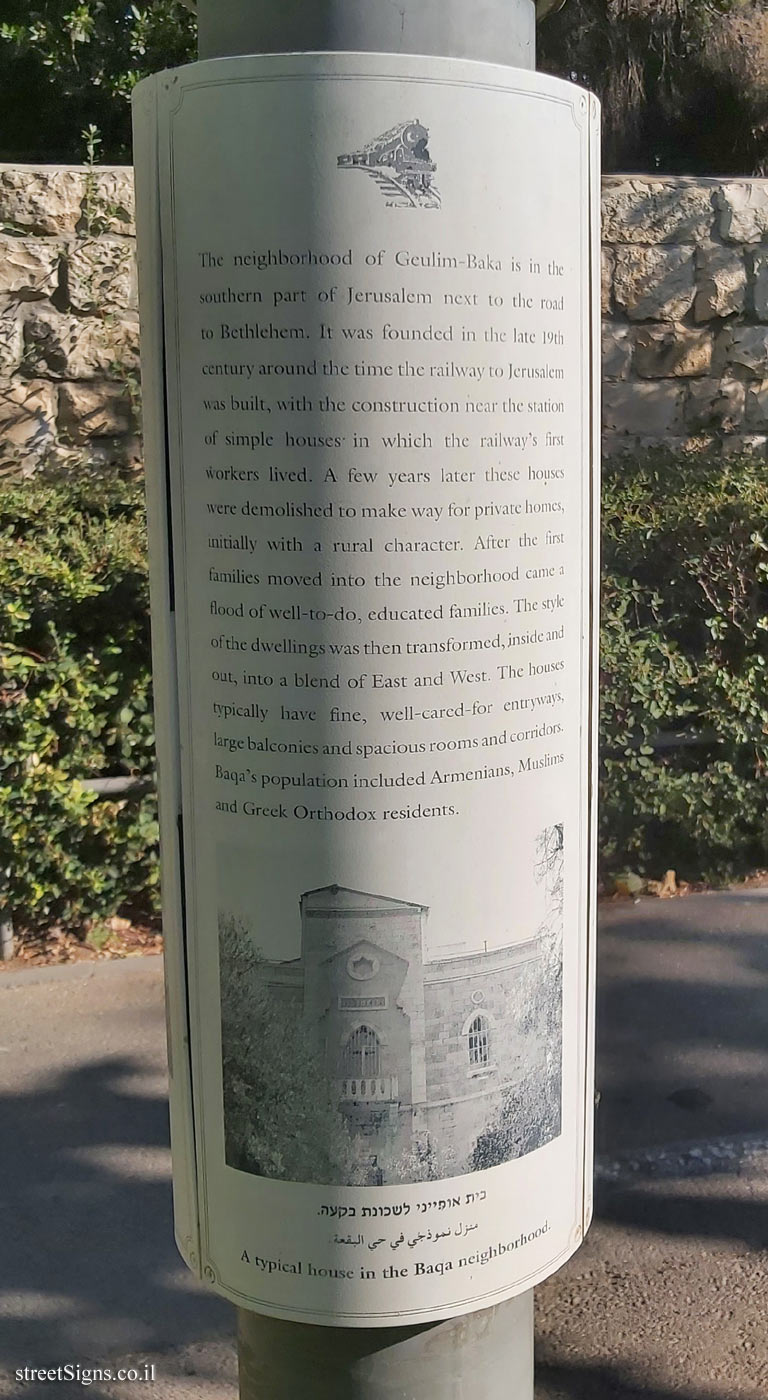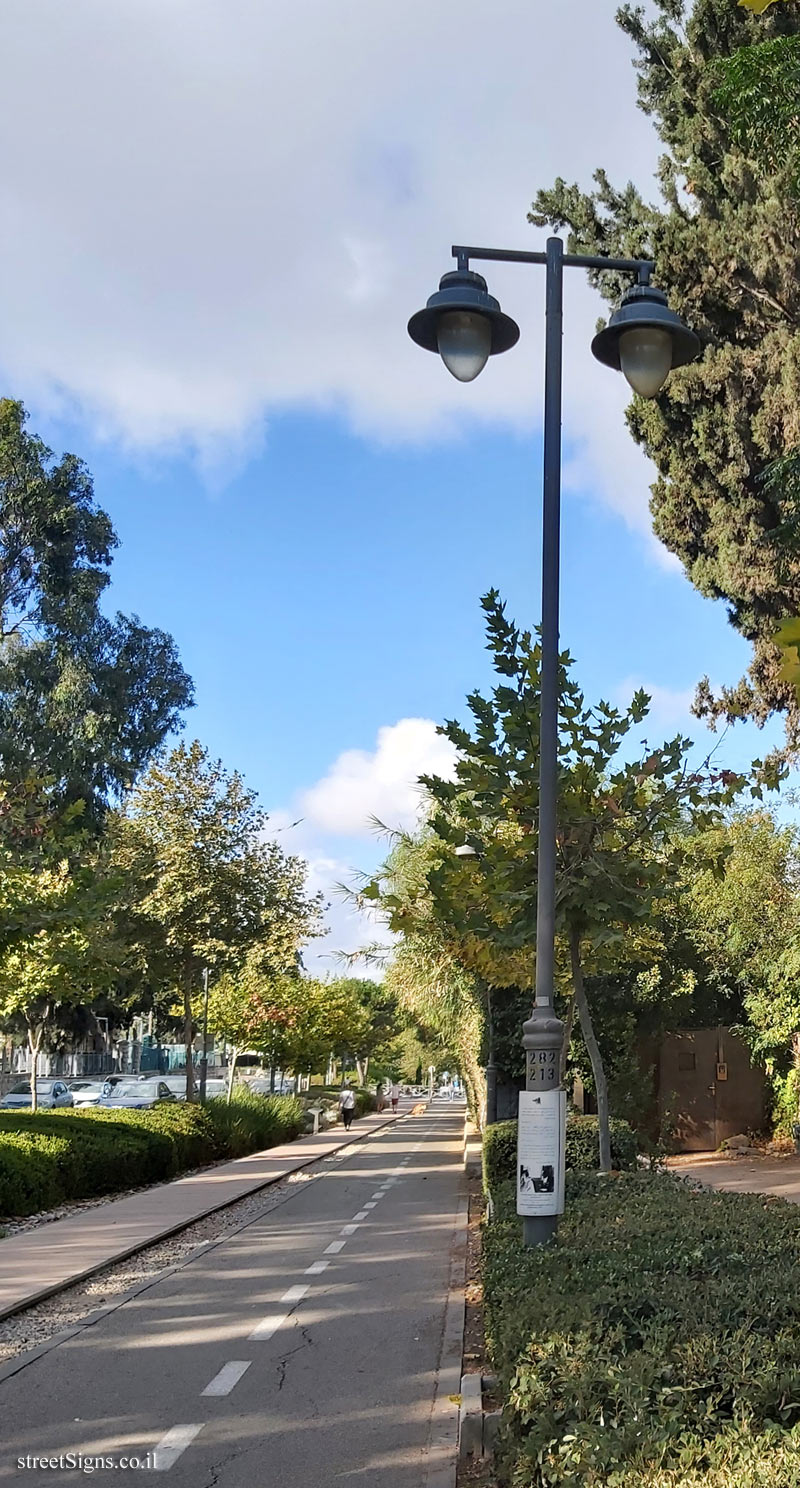
The ultimate street signs, historical sites and house numbers
 Click for a larger image
Click for a larger image  Click for a larger image
Click for a larger image  Click for a larger image
Click for a larger image  Click for all signs belonging to Jerusalem - HaMesila Park - History of the railway line
Click for all signs belonging to Jerusalem - HaMesila Park - History of the railway line
 56 Meter |
56 Meter |  71 Meter |
71 Meter |  93 Meter |
93 Meter |  108 Meter |
108 Meter |  124 Meter
124 Meter